Painted metal doors can be an attractive and durable addition to any home or building. However, over time, the paint can chip, fade, or peel, leaving the door looking worn and unappealing. When this happens, many people turn to paint stripping as a solution. But stripping paint from a metal door can be a time-consuming and challenging process, especially if you’re not sure where to start.
In this post, we’ll walk you through the steps to strip paint from a metal door and provide tips and tricks to make the process as painless as possible. We’ll cover the different methods you can use, such as sanding, chemical stripping, and heat gun stripping, and discuss the pros and cons of each. We’ll also share our recommendations on which tools and supplies to use, and offer some suggestions for safety gear to protect yourself during the process. By the end of this post, you’ll have all the knowledge you need to tackle the job and transform your metal door back to its former glory.
Strip Paint From Metal Door An Overview
If you’re a homeowner, you’ve likely experienced the frustration of watching the paint on your metal door start to peel and crack. Not only can it make your home look unkempt, but it can also leave your door vulnerable to damage from the elements. Fortunately, there’s an easy fix: stripping the old paint off and applying a fresh coat. But where do you even begin?
In this post, we’ll guide you through the process of stripping paint from a metal door, step by step. We’ll cover the tools and materials you’ll need, as well as the different methods you can use to get the job done. We’ll also share some insider tips and tricks to make the process as painless as possible. By the end of this post, you’ll have all the knowledge you need to restore your metal door to its former beauty.
So, if you’re tired of staring at that unsightly, peeling paint job on your metal door, stick around. We’ve got everything you need to get the job done right.
Best Methods in Comparison
When the paint on a metal door starts to chip and peel, it can be a real eyesore. Not to mention, the longer you leave it, the more difficult it becomes to remove. Fortunately, there are several effective methods for stripping paint from a metal door. In this comprehensive guide, we’ll explore the various methods and their pros and cons to help you choose the one that’s right for you.
Method 1: Sanding
Sanding is one of the most popular methods for removing paint from a metal door. This method involves using sandpaper or a sanding tool to remove the paint layer by layer. The advantage of sanding is that it’s relatively inexpensive and doesn’t require any special equipment. However, sanding can be time-consuming and labor-intensive, especially if the door has multiple layers of paint.
Method 2: Chemical Stripping
Chemical stripping involves applying a chemical solvent to the metal door to dissolve the paint. This method is usually faster and easier than sanding, but it does require some caution. Chemical strippers can be hazardous to your health, and you’ll need to take some precautions to protect yourself. Chemical stripping is also more expensive than sanding, as you’ll need to purchase the appropriate chemicals.
Method 3: Heat Gun Stripping
Heat gun stripping involves using a heat gun to soften the paint on the metal door, making it easier to scrape away. This method is also faster than sanding, and it’s less hazardous than chemical stripping. However, you’ll need to be careful not to damage the metal door with the heat gun, and you’ll need to wear protective gear to avoid burns.
| Method | Pros | Cons |
|---|---|---|
| Sanding | Inexpensive, No chemicals | Time-consuming, Labor-intensive |
| Chemical Stripping | Fast, Easy | Hazardous, Expensive |
| Heat Gun Stripping | Fast, Less Hazardous | Potential for Damage, Gear req |
Ultimately, the method you choose will depend on your individual needs and preferences. Sanding is a great option if you’re looking for a low-cost solution, while chemical stripping is ideal if you want to get the job done quickly. Heat gun stripping can be a good compromise between the two. Whichever method you choose, be sure to take the appropriate safety precautions, wear protective gear, and follow the instructions carefully. With a little effort, you’ll be able to restore your metal door to its former beauty.
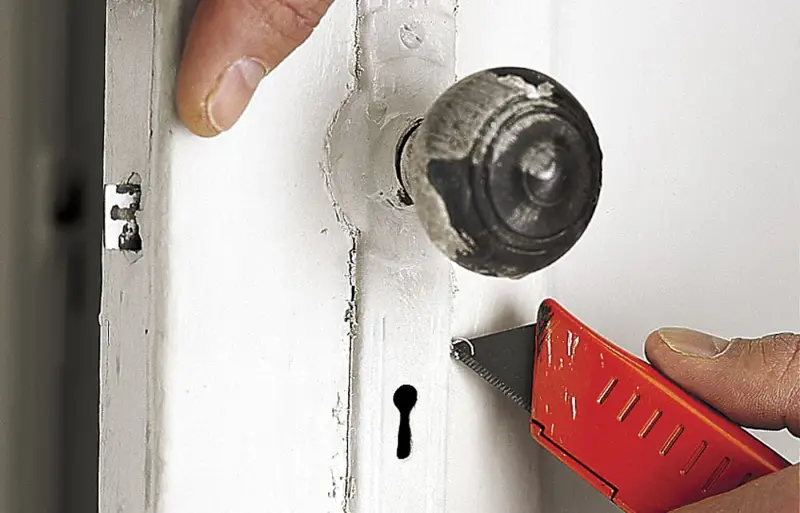
Equipment To Work With Strip Paint From Metal Door
| Equipment/Tool | Purpose |
|---|---|
| Safety glasses | Eye protection from flying debris and chemicals |
| Gloves | Hand protection from chemicals and heat |
| Dust mask/respirator | Protection from inhaling paint dust or chemical fumes |
| Sandpaper | Abrasive material for sanding off paint layers |
| Sanding block | Tool for holding sandpaper and providing a flat surface for sanding |
| Chemical stripper | Chemical solution for dissolving paint |
| Paint scraper | Tool for scraping off paint after chemical stripping or heat gun stripping |
| Heat gun | Tool for applying heat to soften paint for scraping |
| Wire brush | Tool for scrubbing off remaining paint residue or rust |
| Mineral spirits | Solvent for cleaning up paint stripper residue and other materials |
| Drop cloth | Protective cloth to cover surrounding areas and catch paint chips and debris |
Of course, depending on the specific method you choose and the scope of your project, you may need additional or different tools and equipment. Be sure to read and follow all instructions and safety precautions for the tools and materials you use.
Step-by-Step Instructions On Strip Paint From Metal Door
Materials and Equipment:
- Safety glasses
- Gloves
- Dust mask/respirator
- Sandpaper
- Sanding block
- Chemical stripper
- Paint scraper
- Wire brush
- Mineral spirits
- Drop cloth
Step 1: Preparation
Before beginning the paint stripping process, gather all necessary equipment and materials and set up your workspace. Put on your safety glasses, gloves, and dust mask/respirator. Lay a drop cloth on the ground to catch paint chips and debris.
Step 2: Sanding (Optional)
If the door has multiple layers of paint, you may want to start by sanding off the top layer(s) of paint using sandpaper and a sanding block. Use a coarse-grit sandpaper (such as 60-80 grit) to remove the paint layer by layer. Sand in the direction of the grain, and be sure to sand all areas of the door evenly.
Step 3: Chemical Stripping
Apply a chemical stripper to the door following the instructions provided on the product. Make sure the product is designed for use on metal surfaces, and test a small, inconspicuous area first to ensure it doesn’t damage the metal. Allow the stripper to sit for the recommended amount of time, usually 30 minutes to an hour.
Step 4: Scrubbing and Scraping
After the recommended time has passed, use a wire brush to scrub the door, removing any remaining paint residue or rust. Then, use a paint scraper to carefully scrape off the softened paint, working in the direction of the grain. Be careful not to scratch or damage the metal door.
Step 5: Rinse and Clean
Once you have removed all the paint, use a damp cloth to wipe down the door, removing any remaining chemical stripper residue. Then, use a clean, dry cloth to wipe down the door again. Finally, use mineral spirits to clean up any remaining stripper residue or other materials.
Step 6: Finishing Touches
If desired, you can finish the metal door by sanding it again using a fine-grit sandpaper (such as 220 grit), priming it, and painting it with a new coat of paint. Make sure to follow the instructions on the primer and paint products.
Following these instructions, you should be able to successfully strip paint from a metal door. Remember to take your time, wear protective gear, and follow all instructions and safety precautions for the equipment and materials you use. Good luck with your project!
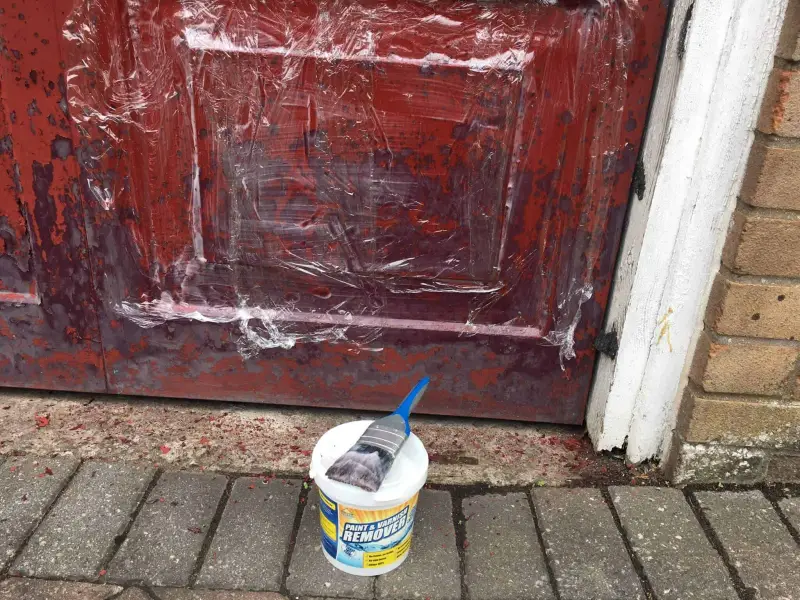
F.A.Q.
Can I strip the paint from a metal door without using chemicals?
Yes, you can use a heat gun or sandpaper to strip the paint from a metal door. However, these methods can be more time-consuming and may require more physical effort.
Can I use a chemical stripper on a painted metal door that has rust?
Yes, you can use a chemical stripper on a painted metal door that has rust. However, you may need to use a wire brush or sandpaper to scrub off the rust before applying the chemical stripper.
How many coats of paint can a chemical stripper remove?
The number of coats of paint that a chemical stripper can remove depends on the type and quality of the product. Some chemical strippers can remove up to five layers of paint, while others may only remove one or two.
What type of chemical stripper is best for removing paint from a metal door?
There are several types of chemical strippers available, each with their own strengths and weaknesses. Look for a product that is specifically designed for use on metal surfaces, and be sure to read and follow the instructions carefully.
Do I need to wear protective gear when using a chemical stripper?
Yes, it is important to wear protective gear when using a chemical stripper, including safety glasses, gloves, and a dust mask/respirator. Chemical strippers can be dangerous if they come into contact with your skin or if you inhale the fumes.
Can I dispose of chemical stripper residue in the trash?
No, you should not dispose of chemical stripper residue in the trash. Most chemical strippers are considered hazardous waste and should be disposed of according to local regulations. Check with your local waste management facility for guidance on how to dispose of chemical stripper residue properly.
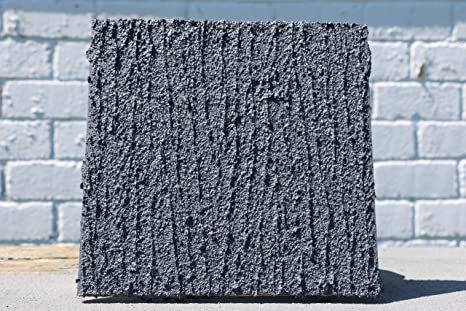
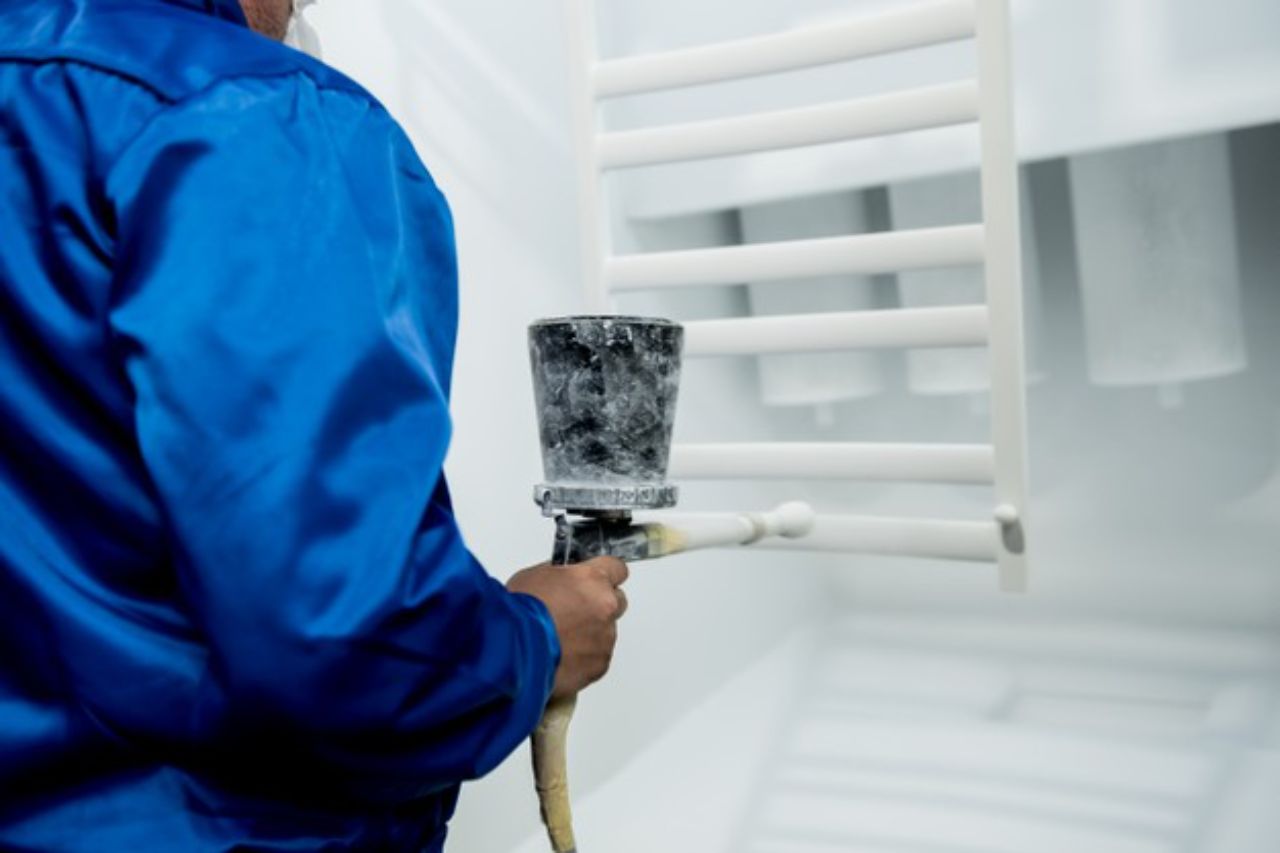
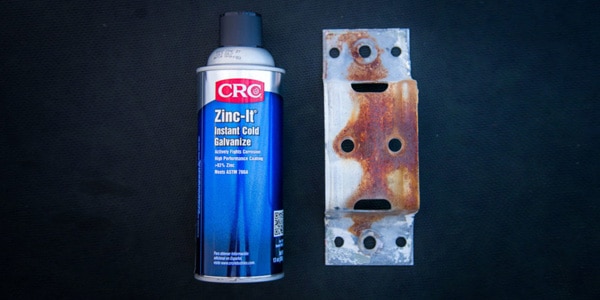
Leave a Reply